St Paul, MN
2023 Booth # 25
© Marcus Hardy
Mid fire functional pottery
St Paul, MN
2023 Booth # 25
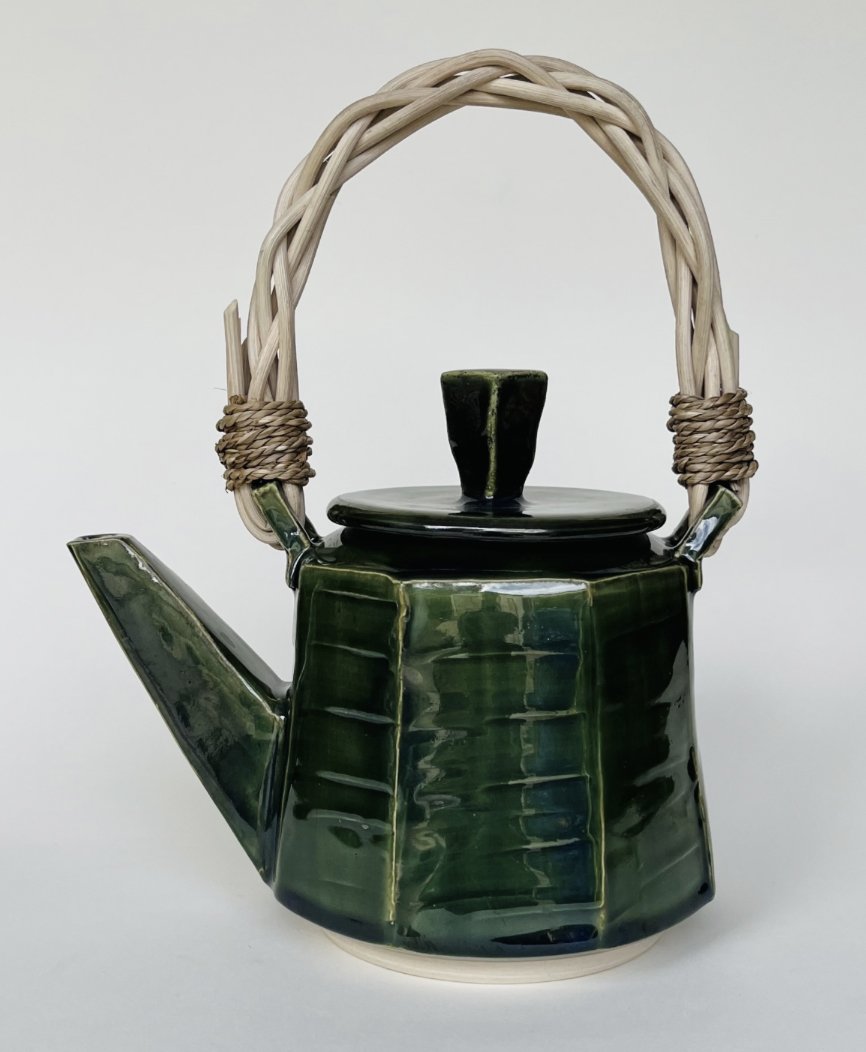
© Marcus Hardy
Mid fire functional pottery
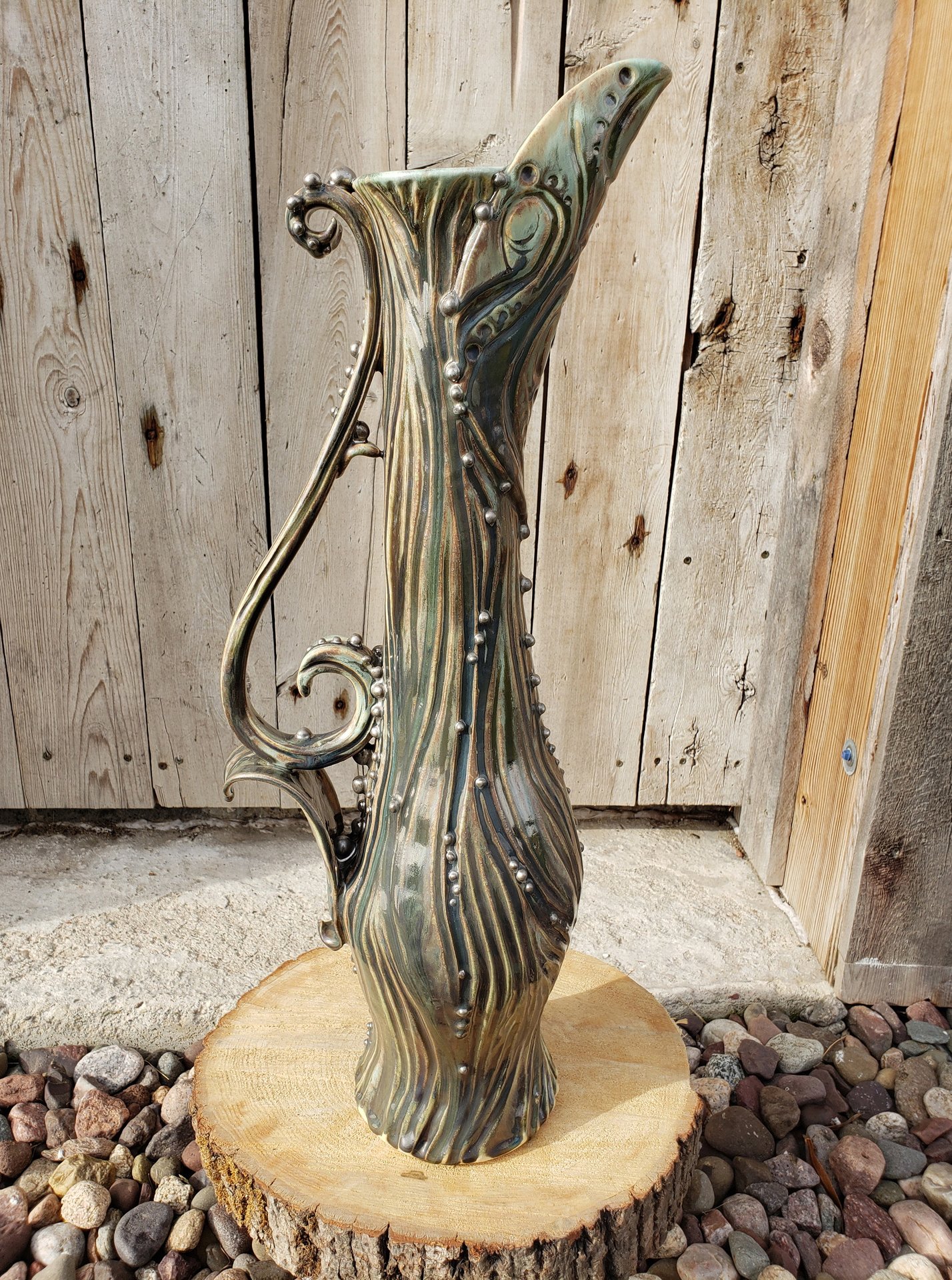
© Kara Lasiewicz
2023 Booth #44
I create functional pottery, sometimes verging into the functional-sculpture realm, influenced by nature.
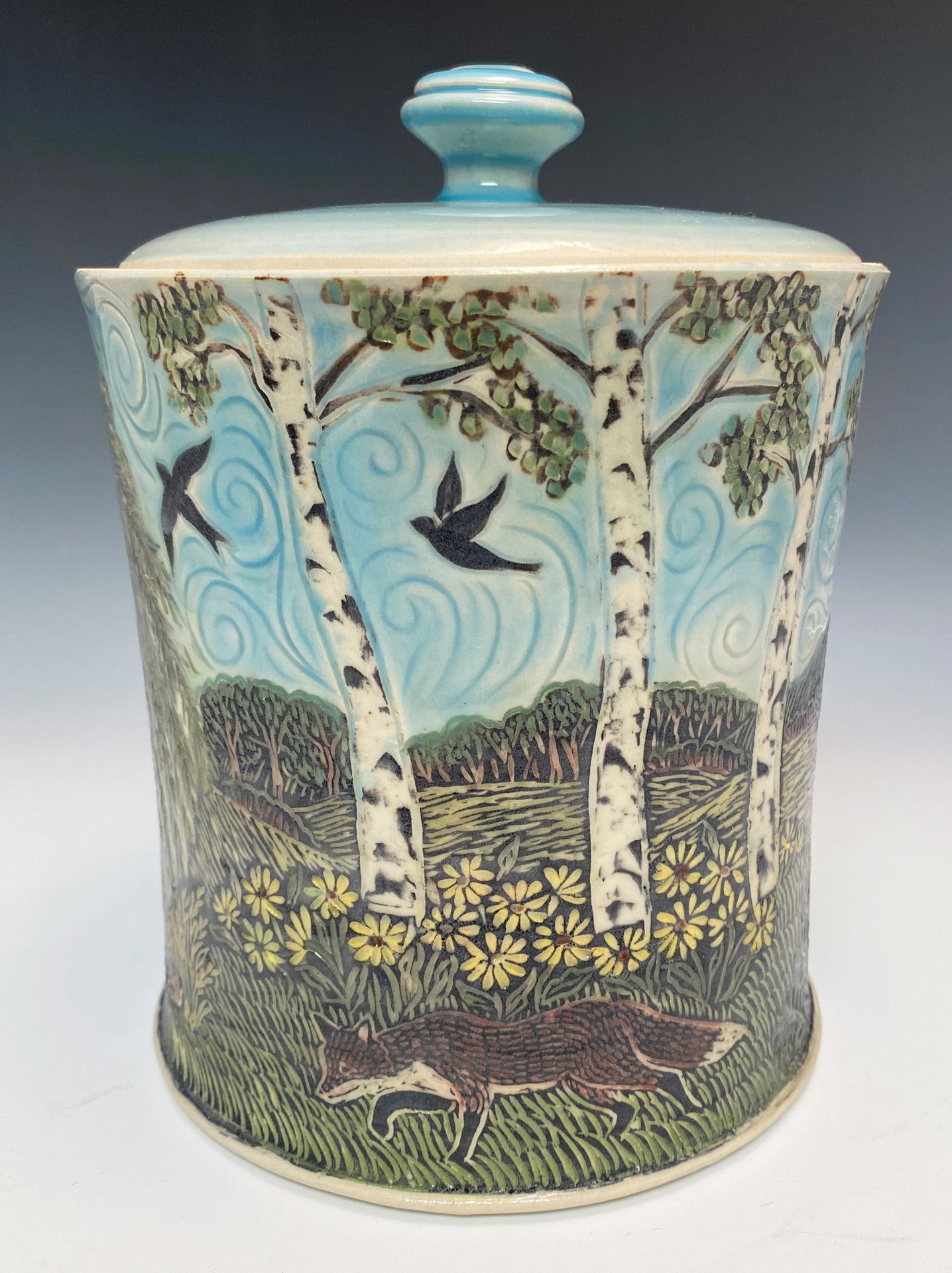
© Mindy Sick

Growing up in rural Montana, I was drawn to the beauty of nature from a young age. For much of my life, I endeavored to capture nature’s beauty in pencil and paint.When I discovered ceramics after moving to Minnesota, I realized I had found the perfect canvas for my nature-inspired designs. After years of training as a student of ceramics at community art centers, I began sharing my work at local art fairs. I am now instructing a ceramics class at Ceramic Sow, a vibrant pottery studio in Hopkins.

I carve the natural life around me into my wheel-thrown orhand-built pots when they are leather hard, a technique called sgraffito. Some of my sgraffito work involves a process I call slip-carving, where I cover a piece entirely in black slip before carving out my designs. The result resembles a block print, which emphasizes the small details that give my birds and foxes personality and my sunflowers movement. I also use “reverse sgraffito” where I carve a slab that is fired to make a stamp. Iimprint fresh clay with my carved patterns to create unique textures and add dimension. I use all of these techniques and more to express my love of nature and design and give my pieces personality and heart.
I make both functional and decorative ceramic pieces that are handcrafted with much decorative detail. I throw many of my pieces on a potter's wheel, but I also enjoy hand-building, so I have a variety of wares. I also include some sculpted elements such as bird knobs or sculpted animals as totem pieces. I enjoy using many different decorating techniques in the pursuit of my artistic vision, which allows me to appeal to different buyers. However, almost all of my pots are hand-etched or carved, or incorporate hand-carved stamps which makes my work both cohesive and unique. I also have a wide range of prices so that anyone who enjoys my work can find something to buy and enjoy.

© Chris Leung
Handmade pottery inspired by Asian heritage and the natural beauty of the Kettle Moraine in Wisconsin

© Linda Lindner
Blending, forming and texturing slabs of clay into tiles. Pressing in bits of local foliage and fabric. Multi layers of glaze invite the eye of the viewer in and call for their hands to touch.
Jacksonville IL

© Joyce Surbeck-Harris
2021 Booth #66
Each of my pieces is one of a kind and made in the tradition of my ancestors. Each is hand burnished with a stone smoked, fumed or embellished with horse hair. Due to the nature of the processes no two pieces can be identical. Approximately one third of the display will be carved and polished. My clay body is my own recipe that produces a porcelain-like finish. All sculptured pieces are done individually and by hand..

© Hironobu Nishitateno
I create Japanese-style functional pottery from stoneware on the potter’s wheel. My shapes and designs reflect Japanese simplicity as well as elegant functionality. My glazes are all handmade and tested, the main ingredient being hand-processed natural ash, which complete my pieces with an organic look. I enjoy including rare details in pieces, such as the time-consuming mishima stamping process and hand-built fine-holed ceramic strainers in the spouts of my teapots to catch tea leaves.
Fairchild, WI
2021 Booth #119
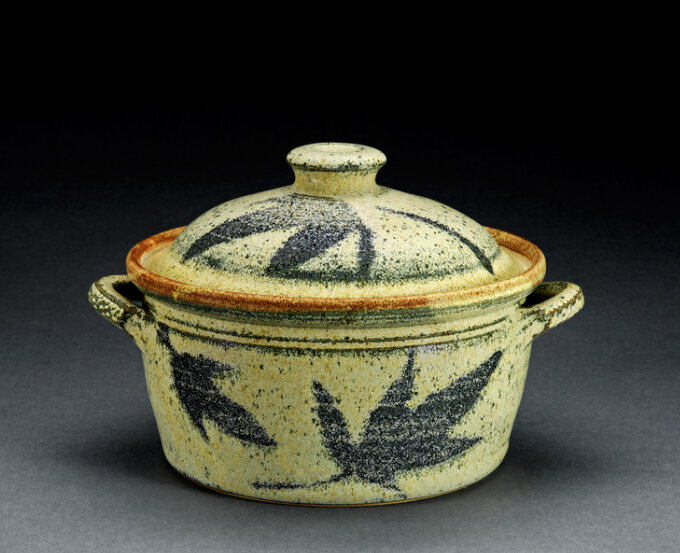
© Susan Koehler
I make a wide variety of functional pottery mainly table/kitchen ware but also decorative pieces. I hand throw each piece using my own stoneware clay body. I formulate my own glazes & use the double dip method of glazing & I use a resist medium for designs. I fire electric to cone 9. All my pottery is food safe.

© Kristin Hill
Each of my works is created on a potters wheel or is hand built. The intricate sculptural work is done directly on the the pot while it is still damp. After drying very slowly, it is bisque fired as one piece. They are then hand brush glazed,to highlight the details and fired to cone 6 in oxidation.
Minneapolis, MN
2020 Booth

© JJ Jucick
I create both decorative and functional stoneware pottery. My work is primarily wheel thrown, but can include slab construction and/or extruded elements as well. My process involves a variety of glaze, image transfer techniques, and masking, to create strong graphics that are inspired by my love for modern art and design. In my work, I seek to create pieces that are visually bold, and pieces that bring a fresh, contemporary aesthetic to an ancient art form. Specific techniques may include: Silkscreen with underglaze, underglaze brushwork, wax or latex resist masking, glaze application by brush, dipping, sponging, or a combination.

© Morgan Whitson
2023 Booth #18
I create functional ceramic pieces that bring a little joy to the daily grind. My colorful gradients add a touch of modern to the traditional medium. Each piece is thrown on the wheel and therefore unique. My surface treatment is playful and bright, yet sophisticated. I’m driven by the challenge of ceramics and the endless possibility of the medium. Much of my personality shows through my work. The gradients imply a painterly spontaneity, and my patterns a deliberate discipline to a plan. My hope is to evoke a feeling of delight from the viewer, much like I experience when I see a piece finally complete. Each piece is thrown on the wheel, hand altered, hand painted with slip in colorful combinations, glazed & fired multiple times. Many are detailed w/ gold luster and fired a third time!

© Samuel Hitchman
Handmade, primarily wheel thrown & altered, utilitarian & decorative ceramics.Numerous, made in house, glazes and slips are dipped and sprayed to enhance the sculptural-traditional forms. All work is gas fired to either cone 10 reduction, or cone 12 oxidation depending on the finish. Prices range from $6 to over $850

© Christiane Porter
I have been creating art as long as I can remember. Beginning with my mother buying me all of the colored pencils and markers a little girl can imagine to my grandmother giving me projects to do while visiting her in Germany. I would spend hours sewing, drawing, coloring, creating and just plain old crafting projects with her. That love of creating grew as I did, and, I really liked like to get my hands dirty and playing with fire…
I graduated from the University of Wisconsin- STOUT. I earned my BS in Art Education as well as a BFA in Studio Art with a concentration in Ceramics and Jewelry. This is where my love of clay and the Raku process began. I have been hooked ever since!
I have been a High school teacher for the last 24 years. As my students’ curiosities have grown for different art methods, so have mine. Learning new art techniques to teach has led to the metal and beadwork that you see on my pottery. I have incorporated my own lamp-work beads, peyote stitched beads and hand-cut copper flowers as adornment to my work. My teaching has allowed me to stay connected to various new and traditional art processes, as well as continuing my journey through Raku.
It is the heat of the fire, creating beautiful things by using fire, that keep me connected to what I do…
A “BIT” about Raku
“Raku” means pleasure or contentment. Raku was created in Japan during the 16th century for the tea ceremony, an essential ritual in the practice of Zen Buddhism.
The Raku clay body is specially formulated with large amounts of “grog” (fine sand-like ground up pottery) which helps make the clay porous. This enables the clay pot to withstand the intense heat and instant temperature changes it must endure during the firing process.
The glazed pots are placed into my small outdoor gas fired kiln, with the firing temperature reaching between 1800-2000 degrees F. When the glaze has melted smooth, I remove the pot from the kiln. The red-hot pot is immediately placed into a bed of sawdust and wood shavings, which ignite. There is a chemical reaction that happens between the flames “licking” around the clay pieces and the copper oxide that is used in the glazes.
The clay pieces are then covered to create an enclosed atmosphere for oxygen reduction. The reduction process brings out the chemical reaction between the lack of air inside the chamber and the glaze … this reaction brings out the brilliant colors and patterns for which Raku is known.
Once the oxygen reduction is complete, I take them out of their “nest” and let them cool completely before handling.
Due to both the porous nature of the clay and the firing process, Raku has a tendency to “craze” (crackle), thus adding to the beauty of the piece, but taking away from the function. Raku pots are primarily non-functional. Foods and liquids may be used, but not stored in this pottery unless a liner is used. The pots will “sweat” out moisture.
The Raku process maintains a close and intimate relationship between the pot and its maker through all stages of the production, particularly during the firing process. Over the years, this intimacy is what has wooed me to love creating with clay, as well as being devoted to the Raku process itself!
Harris, MN

© Matthew Krousey
2023 Booth #13
Thrown and altered stoneware pottery decorated with abstract imagery of animals and landscapes. Decorative techniques and inspiration come from historic folk pottery and early 20th century Regionalism. I seek to bring attention to vanishing flora and fauna from around the midwest. The work is fired in a traditional german style salt kiln.
Pine Island, MN
Wolf Tracks Clay
2023 Booth #75
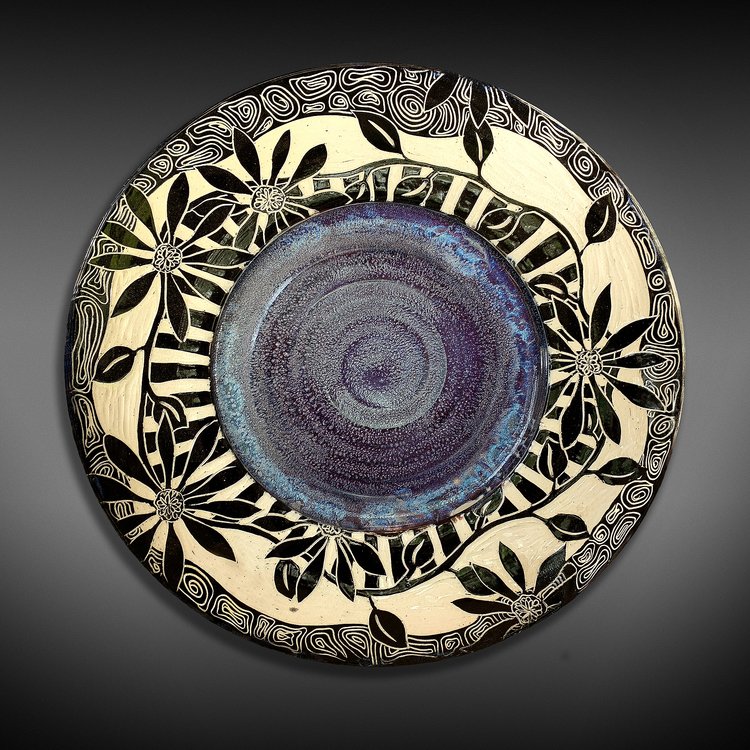
©Janine Schwendinger
I’m Janine Schwendinger. I took 1 ceramics class in high school, and have loved this medium ever since, being inspired by it’s functional beauty. I earned a degree in molecular biology, and have a nursing degree. In 2012 I could no longer resist my true passion, pottery, and I began the process of teaching myself the art of pottery. I now live near Rochester, Minnesota in the middle of the woods surrounded by my first love, nature, and all it’s glorious inspiration.

My pieces are made with a stoneware clay body and are wheel thrown, hand built or a combination of both techniques. I do freehanded slip trailing, carving and sgraffito to decorate much of my work. Hand pulled handles and hand built appliqué are also used on many of my pieces.
I am inspired by nature, and it’s perpetual movement through time and space. Sgraffito is my way of showing this movement. As I scratch through the clay each stroke leaves a story, a history of motion and energy, a way to immortalize a moment in time. Each piece is it’s own story.
Sioux Falls, SD
2023 Booth #56
I received my first pottery lesson in 1992. It consisted of approximately 5 minutes of instruction and demonstration, after that I have spent the time since then developing my form and finding a voice for our my work.
Together with my wife, we have spent several years researching primitive firing techniques and other potters’ modern-day interpretations. I was fascinated by the colors and designs achieved without glazes and began to experiment. We embraced the unpredictability and variations from piece to piece. Every firing is different, the method may be the same, but results do vary.
The time spent working without glazes has given myself and my wife the opportunity to explore and develop functional ware that still expresses variation and unpredictability in each piece by allowing the exterior to crack and highlight those cracks in the final product. Our pieces are commonly described as "Statement" piece in a collection.

©Chad Dykstra